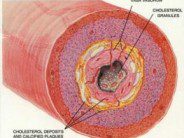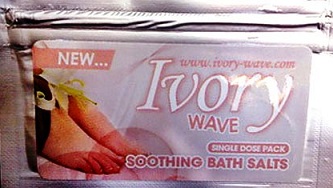 During the summer, sun bathing and sun tanning are some of the activities that bring enjoyment to everyone. That enjoyment can quickly turn into severe pain when over exposure results in sunburn. Suntans and sunburns result from exposure of skin to the ultraviolet portion of the light that the sun produces. Symptoms of a sunburn include skin warmth, tenderness, swelling, and a red discoloration. All humans can develop sunburn when over exposed to the ultraviolet light of the sun regardless of how light or dark your natural skin tone may be. Researchers from King’s College London, lead by Dr. Stephen McMahon, have identified a compound that contributes to the pain that is produced by sunburn. Their research was recently published in the journal Science Translational Medicine. The scientists hypothesized that previously unrecognized cytokines and chemokines may contribute to the pain resulting from sunburn. To test their hypothesis, human volunteers were recruited and exposed to ultraviolet B radiation. The volunteers were exposed in doses that would normally have caused a sunburn. Biopsies of the irradiated skin from the volunteers were taken and tested for 90 different inflammatory mediators that are thought to possibly contribute to the pain resulting from inflammation. Similar experiments were carried out in rats, and a similar inflammatory mediator profile was observed for both species. Several chemokine genes that are over expressed during pain hypersensitivity were identified and dysregulation of these chemokines was documented. During induction with ultraviolet B irradiation, a chemokine called CXCL5 was over expressed to the greatest extent in humans. When this chemokine was injected into the skin of rats, it was able to reproduce the skin hypersensitivity that was also caused by exposure to ultraviolet B irradiation. This hypersensitivity reaction was associated with infiltration of inflammatory mediators as well as cells that are known to be involved in the inflammatory response. Blocking CXCK5 with neutralizing antibodies, which inhibited its effects, caused alleviation of the pain response. The researchers wrote, “Our studies demonstrate the utility of experimental pain models in animals and humans to understand pathophysiological mechanisms likely to be relevant in man. They underline the importance of inflammatory mediators, in particular the chemokines, in the development of abnormal pain states, emphasizing their significance as targets for the development of new analgesics”. Future research will focus on further characterizing the exact mechanism that CXCL5 uses to cause sunburn pain. This will allow the development of medications which block its activity and thus serve a role in the treatment of diseases characterized by chronic pain.
During the summer, sun bathing and sun tanning are some of the activities that bring enjoyment to everyone. That enjoyment can quickly turn into severe pain when over exposure results in sunburn. Suntans and sunburns result from exposure of skin to the ultraviolet portion of the light that the sun produces. Symptoms of a sunburn include skin warmth, tenderness, swelling, and a red discoloration. All humans can develop sunburn when over exposed to the ultraviolet light of the sun regardless of how light or dark your natural skin tone may be. Researchers from King’s College London, lead by Dr. Stephen McMahon, have identified a compound that contributes to the pain that is produced by sunburn. Their research was recently published in the journal Science Translational Medicine. The scientists hypothesized that previously unrecognized cytokines and chemokines may contribute to the pain resulting from sunburn. To test their hypothesis, human volunteers were recruited and exposed to ultraviolet B radiation. The volunteers were exposed in doses that would normally have caused a sunburn. Biopsies of the irradiated skin from the volunteers were taken and tested for 90 different inflammatory mediators that are thought to possibly contribute to the pain resulting from inflammation. Similar experiments were carried out in rats, and a similar inflammatory mediator profile was observed for both species. Several chemokine genes that are over expressed during pain hypersensitivity were identified and dysregulation of these chemokines was documented. During induction with ultraviolet B irradiation, a chemokine called CXCL5 was over expressed to the greatest extent in humans. When this chemokine was injected into the skin of rats, it was able to reproduce the skin hypersensitivity that was also caused by exposure to ultraviolet B irradiation. This hypersensitivity reaction was associated with infiltration of inflammatory mediators as well as cells that are known to be involved in the inflammatory response. Blocking CXCK5 with neutralizing antibodies, which inhibited its effects, caused alleviation of the pain response. The researchers wrote, “Our studies demonstrate the utility of experimental pain models in animals and humans to understand pathophysiological mechanisms likely to be relevant in man. They underline the importance of inflammatory mediators, in particular the chemokines, in the development of abnormal pain states, emphasizing their significance as targets for the development of new analgesics”. Future research will focus on further characterizing the exact mechanism that CXCL5 uses to cause sunburn pain. This will allow the development of medications which block its activity and thus serve a role in the treatment of diseases characterized by chronic pain.
Reference:
John M. Dawes et al. “CXCL5 Mediates UVB Irradiation-Induced Pain” Sci Transl Med 6 July 2011: Vol. 3, Issue 90, p. 90ra60 DOI: 10.1126/scitranslmed.3002193










 DrSamGirgis.com is a blog about medicine, nutrition, health, wellness, and breaking medical news. At DrSamGirgis.com, the goal is to provide a forum for discussion on health and wellness topics and to provide the latest medical research findings and breaking medical news commentary.
DrSamGirgis.com is a blog about medicine, nutrition, health, wellness, and breaking medical news. At DrSamGirgis.com, the goal is to provide a forum for discussion on health and wellness topics and to provide the latest medical research findings and breaking medical news commentary.
{ 0 comments… add one now }